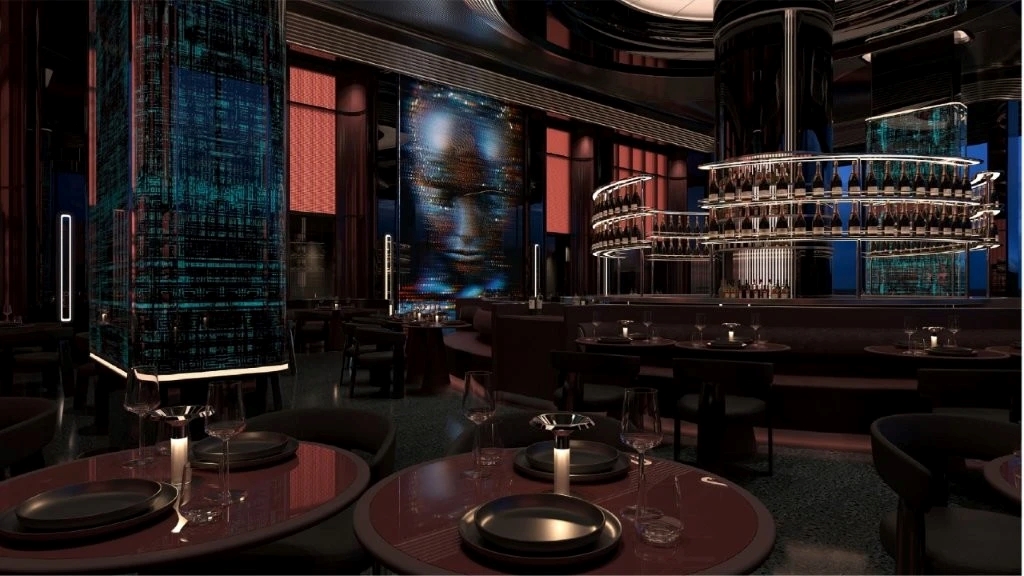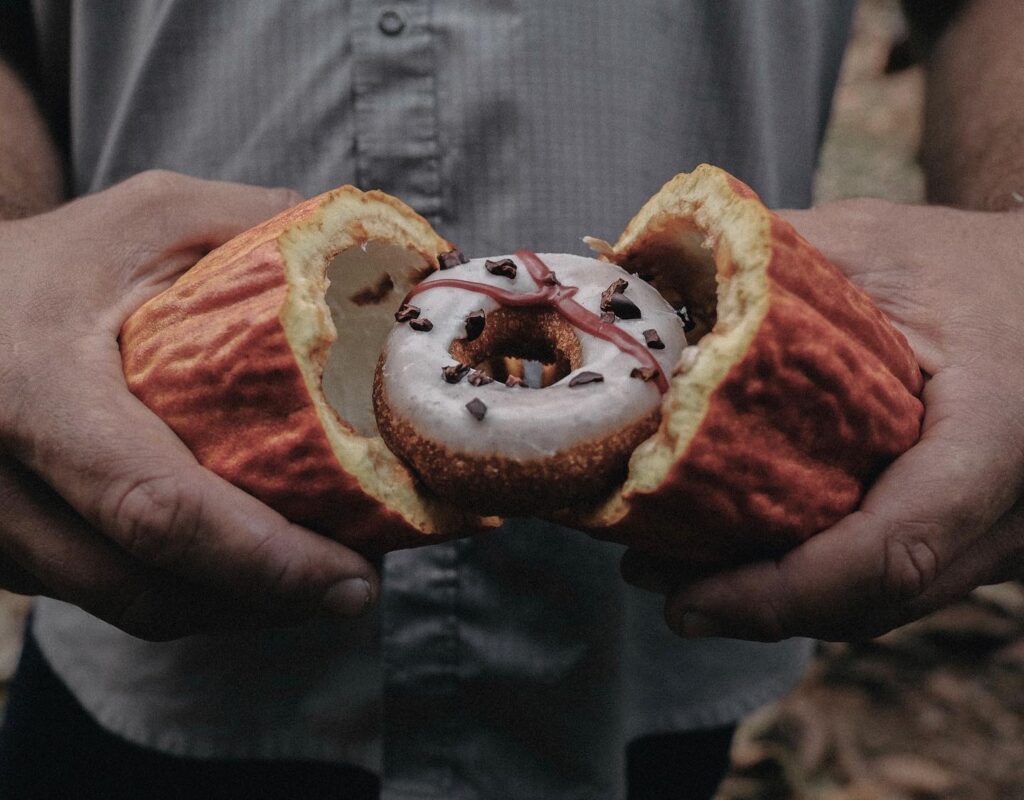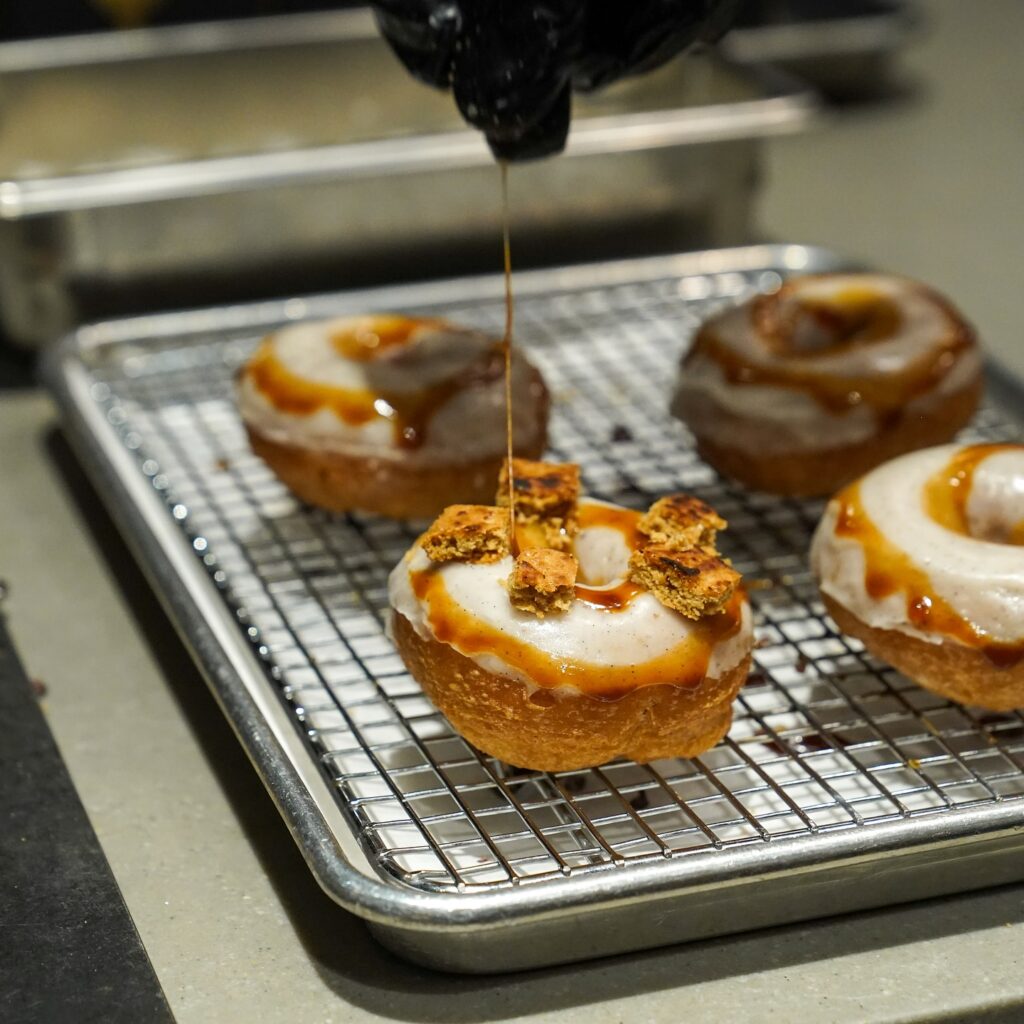What Makes a Restaurant ‘Smart’?
The New Wave of F&B Tech Goes Far
Beyond Robot Waiters
From AI chefs in Dubai to robotic servers in Tokyo and sustainable smart tech transforming
Los Angeles’ dining scene, these cities are at the forefront of a culinary revolution.
5 September 2025
Share this exclusive content from Saladplate

Spock Private Dining Room | Photo credit: Woohoo Restaurant
In Dubai, technology and culinary artistry collide in bold new ways, creating experiences that feel like stepping into the future. Set to open near the iconic Burj Khalifa in Downtown Dubai’s Kempinski The Boulevard Hotel, WOOHOO promises an immersive, AI-powered experience unlike anything else in the region.


Chef Aiman and Woohoo Restaurant | Photo credit: Woohoo Restaurant
At the heart of the establishment’s innovation is Chef Aiman, an AI trained on decades of food science, molecular gastronomy, and thousands of global recipes. This culinary “brain” designs menus that fuse diverse flavours – reimagining sushi with unexpected textures, crafting vibrant Peruvian-Mexican taco mashups, and experimenting with sustainable ingredients like meat trimmings and fats often discarded in traditional kitchens.
But dining at WOOHOO isn’t just about what’s on your plate. Its futuristic environment, with dynamic blue lighting that shifts in response to the mood, volumetric art installations that blur the lines between physical and digital, and cyberpunk-inspired private lounges like “Spock,” transport guests into a near-future world.
“The goal isn’t to replace chefs but to elevate creativity,” says Ahmet Oytun Cakir, co-founder of WOOHOO and CEO of hospitality company Gastronaut. At WOOHOO, artificial intelligence is woven not just into the menu, but the mood, movement, and storytelling, delivering a truly next-level dining journey where technology and craftsmanship converge.
This marriage of technology, sustainability, and art creates a new kind of restaurant, where every element, from the glowing bronze-toned furniture to the panoramic views of Dubai’s skyline, is meticulously designed to surprise and delight.
In Tokyo, Robots that Serve with a Friendly “Meow”

BellaBot | Photo credit: Pudu Robotics
Tokyo’s approach to smart dining is deeply shaped by its demographic challenges. With one of the world’s oldest populations and a shrinking workforce, Japan is turning to robotics to keep restaurants running smoothly while preserving the warmth of human hospitality.
The Skylark Group, Japan’s largest table-service restaurant chain, has deployed around 3,000 charming cat-eared delivery robots called BellaBots across more than 2,000 locations nationwide. These autonomous helpers deliver food, clear tables, and interact with customers – tasks that ease staff workload during busy shifts without sacrificing service quality. Surveys show 67% of customers appreciate the BellaBots, praising their interactive design and friendly “meows.”

BellaBot | Photo credit: Pudu Robotics
Employees like 71-year-old Yasuko Tagawa have embraced the robots as coworkers. She estimates that half of her daily tasks now involve robotic assistance and often talks to the machines as trusted partners, saying, “Thanks for your hard work. I’ll be counting on you.” This cultural acceptance, rooted in Japan’s long-standing affection for robots in popular culture, contrasts sharply with scepticism seen elsewhere.
Japan’s service robot market is booming, expected to nearly triple by 2030 to ¥400 billion ($2.7 billion), with robots increasingly assisting in elder care and other industries. Tokyo offers a powerful blueprint for integrating smart tech into human-centric service, balancing efficiency with empathy.
Los Angeles Sees Smart Tech Meeting Sustainable Sourcing
In Los Angeles, innovation is anchored in sustainability, where AI is enhancing not just kitchen operations, but the ethics behind every bite.

Photo credit: Holey Grail Donuts
Holey Grail Donuts, founded by siblings Nile and Hana Dreiling, exemplifies this ethos. Their signature hand-fried taro donuts are crafted through a time-honoured process involving boiling, pounding, and fermenting taro root, sourced directly from Hawaiian farmers. Using organic, fair-trade coconut oil for frying, they’re redefining indulgence by prioritising health, taste, and environmental impact in equal measure.

Photo credit: Holey Grail Donuts
While AI isn’t part of the recipe itself, it powers the business behind the scenes, streamlining market intelligence, inventory management, and stock control to keep their food trucks running efficiently in tight urban spaces. A donut-frying robot onboard enhances production speed, while app-based ordering systems elevate the customer experience by making ordering seamless and contactless.
But the Dreilings’ use of AI goes deeper. Hana Dreiling highlights how technology has become a “secret weapon” for sustainability, saying, “AI-driven tools have helped us fine-tune our supply chain, shift to a quarterly menu, and reduce waste, all while celebrating our core ingredient: taro root, hand-harvested in Hawaii.” By partnering with local farmers, they leverage AI to support more sustainable agricultural practices without sacrificing the sacred traditions that make taro so special. “For me, it’s about letting technology and tradition work together to build a more sustainable, resilient food ecosystem,” Hana explains.

Holey Grail Donuts Utilise A Donut-Frying Robot | Photo credit: Holey Grail Donuts
Co-founder Nile adds, “We are reinventing a familiar food to meet our values while improving taste, without the negative health and environmental consequences.” The donut’s hot, crispy base is the perfect canvas for over
60 rotating flavours, from classic to bold, all crafted with conscious sourcing at their core.
Nearby, Goop Kitchen is harnessing ClearCOGS’ AI-powered demand forecasting to cut food waste and costs by over 2%, showing how data-driven kitchens can be eco-conscious and profitable. Meanwhile, Shake Shack’s collaboration with Serve Robotics and Uber Eats introduces AI-powered autonomous delivery robots on Los Angeles sidewalks, reducing emissions and redefining last-mile logistics.

ClearCOGS’ AI-powered demand forecasting to cut food waste and costs by over 2% | Photo credit: Goop Kitchen
L.A.’s innovation is defined not just by technology, but by how it’s rooted in strong values. From farm-to-table finesse at Holey Grail to data-led sustainability at Goop Kitchen, the city is proving that smart dining can elevate both taste and responsibility.
The Future of Dining: Smart, Sustainable, and Human-Centric
Beyond technology, these three cities share a forward-thinking approach, leveraging smart tools to tackle universal F&B challenges like labour shortages, sustainability pressures, and rising consumer expectations for personalised, seamless experiences.
Global giants like Yum! Brands (owner of KFC and Taco Bell) partnering with tech firms like NVIDIA to roll out
AI-powered kitchens worldwide show how quickly smart dining is scaling.
Yet, as these pioneers prove, technology alone isn’t enough. Japan’s cultural acceptance of robots, Dubai’s AI-human collaboration, and L.A.’s sustainability-first approach reveal the critical importance of thoughtful integration.
The smart restaurant revolution promises to make dining more creative, resilient, and meaningful, not cold or impersonal. As these innovations trickle down to smaller markets, expect AI-assisted kitchens, robotic helpers, and data-driven menus to become standard, reshaping how we eat across the globe.
Author: Michelle Yee
A content and communications professional, Michelle spent more than a decade creating content for several leading media titles including Lonely Planet Asia, Yahoo Singapore, and Wine & Dine. After leaving the media industry in 2019, she has been honing her craft at a global communications agency where she helps develop and drive publicity campaigns for brands in the consumer and corporate sectors.



